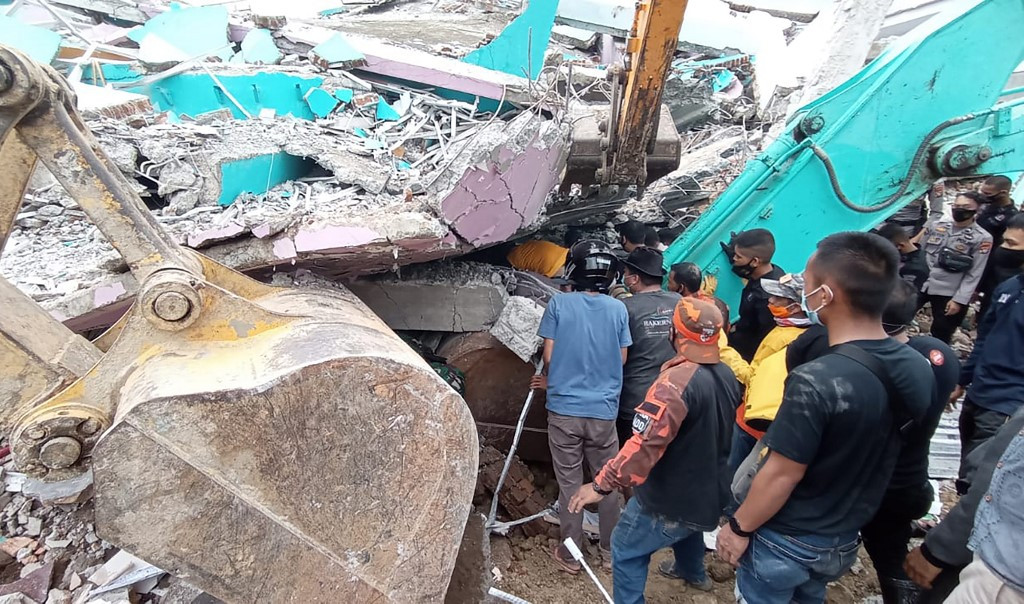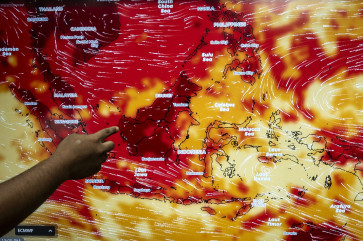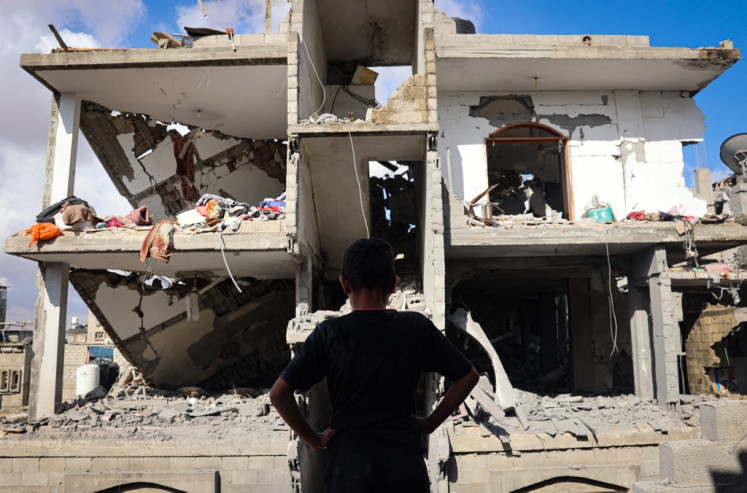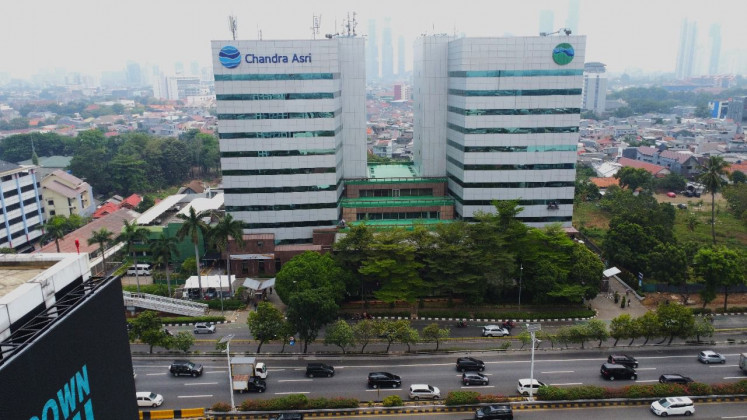Multiple disasters
The pandemic must be posing a challenge, if not risk, to both the humanitarian workers and disaster victims as they have to abide by health protocols in order to keep themselves from getting infected.
Change Size

I
t would be no exaggeration to describe the past year as annus horribilis as a result of the devastating impact of the COVID-19 pandemic. With a series of disasters marking the start of the new year, while the coronavirus continues to flex its muscles, it seems Indonesia must get ready for annus miserabilis.
While still in a state of shock upon hearing about the Sriwijaya Air plane crash on Jan. 9, landslides hit the West Java town of Sumedang. The Boeing 737-500 with 62 people on board smashed into the Java Sea after a free fall from an altitude of 3,300 meters. The landslides were also fatal, with 24 dead bodies recovered and 16 still missing as of Thursday.
Disaster continued to test the nation when two earthquakes shook West Sulawesi on Thursday and Friday, causing serious damage to houses and buildings, including the governor’s office which partially collapsed. Mamuju and Majene regencies are the areas affected the most by the quakes, which have claimed 37 lives so far and displaced thousands of others.
The National Search and Rescue Agency (Basarnas) was quick to send teams from Makassar, Palu and Jakarta to help locate and evacuate those trapped under the rubble. The coming days and weeks will mean extra work for the agency, which has been involved in the joint operation in search of the remains of the Sriwijaya Air plane that crashed last week.
The National Disaster Mitigation Agency (BNPB), the Indonesian Military, the National Police, the Indonesian Red Cross and other institutions that deal with disaster response will also be stretched to the limit as disasters came one after another. Ever since the first positive COVID-19 case was announced in March last year, the BNPB has assumed the responsibility of containing the spread of the virus, while the police and military have been deployed to make sure health protocols are implemented.
The pandemic must be posing a challenge, if not risk, to both the humanitarian workers and disaster victims as they have to abide by health protocols in order to keep themselves from getting infected. We can imagine that many, especially among the displaced people, might perhaps worry less about the protocols in this time of ordeal.
But knowing the danger of the virus, which has since March 2020 infected more than 882,000 people and killed over 25,400, local administrations in particular have to provide facilities that will enable everybody to comply with the COVID-19 prevention measures, while extending relief.
Despite the helping hand, survivors of the quakes in Mamuju and Majene remain in danger as the Meteorology, Climatology and Geophysics Agency (BMKG) has warned of possible aftershocks. The agency’s early warning should therefore prompt precautionary measures to prevent any more fatalities.
It looks like more disasters are lurking across the country given the fact that the rainy season will only end in May as a result of the La Nina phenomenon. The BMKG has forecast an increase in rainfall intensity this year compared with last year, and it has called on flood-prone regions to take mitigation efforts now.
As the old saying goes, we had better carry an umbrella before the rain falls.









